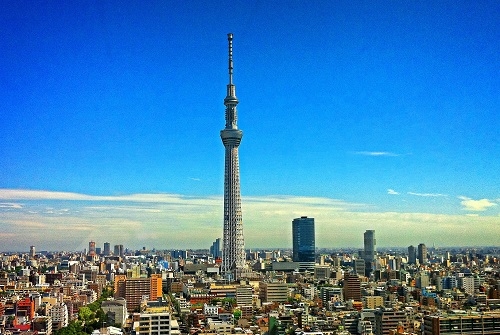Growing pains: Asian hedge funds

HFR’s November 2016 Asian markets hedge fund industry report found that total capital invested in Asian hedge funds increased to $111.8bn in the third quarter of last year, recovering the decline from the previous three months but remaining below the record high of $119.8bn reached in 2014.
Chinese
hedge funds posted strong gains as the Shanghai Composite Index pared 2016
losses and the renminbi stabilised, while hedge funds focused on investing in
Japan also produced positive returns as the yen posted intra-uarter gains
against the US dollar and year-to-date losses on the Nikkei 225 were pulled
back.
Asian hedge funds navigated intense regional
equity and currency market volatility in 2016. With the macroeconomic and
political overhang of both the US election and Brexit now removed, and as global
M&A activity continues to accelerate, HFR president Ken Heinz expects
specialised Asian hedge fund strategies to attract global and institutional
investors in 2017.
“Interest in quantitative hedge funds in Asia
has continued to expand, but they have been popular with Asian investors for
some time and while Asian equity markets clearly declined in early 2016, there
is no evidence of a causal relationship,” he says.
Quantitative strategies
According
to Eurekahedge analyst Mohammad Hassan, this trend is a reflection of
quantitative strategies being able to identify, process and step into
potentially lucrative trades ahead of the crowd. “Systematic strategies with
exposure to commodity futures have the added benefit of low correlations to
traditional equity market focused strategies. While there has been gravitation towards
quant strategies globally, there is a real worry that perhaps there are too
many copycat strategies out there crowding out trades.”
Growing
interest in quantitative hedge funds in Asia is perhaps an indication of a
potential longterm trend towards computer-driven strategies. Peter Douglas,
Singapore-based principal of the Chartered Alternative Investment Analyst
(CAIA) Association suggests that it is more about the rapid development of super-fast
computing power, the development of tools to extract information from big data
and the potential of machine learning.
“Any
successful alpha strategy must, by definition, be doing something different
from the mainstream and what we are seeing is a race to stay ahead of the
technological curve,” he says. “It should also be noted that any computerdriven
strategy is only as good as the minds that conceived and built it. The industry
still needs the smarts to make this work.”
Philippe
Ferreira, senior cross asset strategist at Lyxor Asset Management, says growing
interest in quantitative hedge funds in Asia reflects a rebalancing between
discretionary and systematic strategies. “Systematic strategies are attractive
for portfolio diversification purposes, yet some long/short equity managers
have faced more difficulties in reducing risk and protecting capital recently.
Hence part of that growing interest in quantitative hedge funds in Asia is
related to diversification purposes and the ability of quantitative strategies
to have lower correlation to traditional markets. Disappointing equity returns
have also played a role, though.”
Foresee
Global Asset Management (HK) partner and CEO, Tom Weiye Tang, says this has remained
a theme. “Disappointing equity returns in 2016, especially in China, have
driven money towards computer-driven strategies. The average performance of
Chinese quantitative funds easily beat that of the long-biased funds last year
and more and more investors are turning to quant strategies for stable and low
risk returns in times of increasing uncertainty.”
Another
factor behind strong fund flows into quantitative strategies in Asia is the
desire for attractive risk-adjusted absolute returns where investors are not
also being overcharged for beta, adds Robert Frey, founder and chief investment
officer of FQS Capital Partners.
Reliance
on equities
Heinz
accepts that Asian hedge funds are more reliant on equities than their
international counterparts, observing that 76% of Asian hedge fund capital by
AuM is in equity funds compared with 61% for the global industry. The disparity
is even greater when measured by the percentage of hedge funds that are equity
ones – 76% in Asia versus 47% globally.
Tang
agrees with the view that Asian hedge funds are over-reliant on equities,
noting that hedge funds based in Asia ex-China are predominantly trading
long/short equity strategies and that alternative strategies such as CTA funds
are hard to find. “In comparison, there are many more CTA funds inside China
due to its extremely liquid commodity futures markets. The fact that China’s
commodity markets are still closed to offshore investors, together with the
lack of active commodity exchanges in Asia outside China, is one of the main
reasons that Asian hedge funds are over-reliant on equities.”
As
Asian markets become more mature and sophisticated, it is only normal to see
the hedge fund industry expanding outside of its traditionally long-biased
equity space, suggests Frey. Moreover, its underlying market dynamics – with
substantial volatility, liquidity and active participants – provide a fertile
ground for all type of arbitrageurs, whether quant, macro or discretionary
stock pickers.
“For
instance, the Chinese market looks particularly attractive and we have seen a
handful of successful managers in this area, but the key to making this a great
opportunity for the long term will be the attitude taken by regulators and the
ability for hedge funds to adapt. Shorting remains an issue and recent changes
such as limiting futures hedging have made it even more difficult for
arbitrageurs to operate,” he continues. “We hope that as this market opens up
further, the opportunity set will increase.”
Hassan
is more confident, noting data on the most popular strategies from 2008 to 2016
illustrate that reliance on long/short equities has fallen over that period,
although it is still some way ahead of multistrategy. This view is shared by
Douglas, who observes that Asian hedge funds merely reflect the opportunities
available to them and that the reliance on equities over other assets or
contracts is a function of the underlying capital markets of the region.
“Asia
– especially Greater China – is one of the most commercially active regions in
the world and we see managers diversifying their portfolios into other asset
classes to generate a good balance of asset allocation that is in accordance
with the fund’s strategy,” adds Tony Kan, managing director of Custom House
Fund Services Hong Kong. “The other asset classes that managers are
diversifying into include OTC corporate bonds seeking stable yields, private
placements and later stage pre-IPO deals to take advantage of growing
investment opportunities in Greater China.”
Stephane
Macresy, head of hedge fund selection Asia at Lyxor Asset Management, notes
that event-driven and long/short equity managers constitute the bulk of the
strategies in Asia but also that other strategies have achieved positive
returns. “Global macro, CTA and multi-strategy managers have also experienced
great success, while relative value credit or volatility strategies are gaining
momentum. So the issue has not been over-reliance on equities but rather the inability
of traditional equity strategies to adapt to changing market conditions.”
Eurekahedge
data highlights a 60% increase in event-driven hedge fund AuM between 2008 and 2016,
although the total for last year was approximately 18% down on the figure for
2011.
Private
equity competition
There
has been much talk of reallocation of assets from hedge funds to private equity
in Asia, particularly by family offices with aggressive performance goals. UBS’s
2016 global family office report notes a 0.9% decrease in hedge fund
allocations and that this pattern is likely to be reinforced with family
offices planning to move more money into private equity.
However,
Hassan is unconvinced that this is indicative of a major shift in investor
sentiment. “Private equity has historically sat well with Asian investors who
like the idea of buying into a business and having some control over its
destiny. Recent reports of reallocations from hedge funds to private equity
have manufactured trends out of isolated events – with dry powder at historical
highs in the private equity space, one needs to evaluate this more carefully.
The opportunity set of hedge fund strategies is more diversified than it was 10
years ago. Asian hedge fund AuM is still around 8% of total global money
invested in hedge funds so there is much room for growth here, although it is
going to take some time.”
This
sentiment was echoed at an EisnerAmper-sponsored Chinese Alternative Asset
Management Professionals (CAAMP) event in late 2016, where participants were
told of how Asia’s hedge fund industry was undergoing a transformation. These
changes include a shift from historically equity-centric managers to a broader
set of strategies (including multi-strategy, Asian macro and credit-focused
strategies) as well as North American investors paying more attention to Asian managers.
Macresy
accepts that there may be some consolidation in the Asian hedge fund space and
more managers entering liquid alternatives. But, within alternative
investments, he expects private equity and hedge funds to grow in parallel. “Whereas
large Asian investors have mainly been allocated to global brands, we expect
that both Asian and overseas investors will focus more on Asian hedge funds,
while investing in private equity, infrastructure and real estate continues to
form a strong trend for investors in the region.”
Assets
have been reallocated to private equity funds in Asia due to the lack of
diversity and performance of Asian equity-focused hedge funds, but the private
equity space is becoming overcrowded with too much capital. That is the view of
Yang, who is confident that quantitative hedge funds will attract assets
looking for private equitystyle returns, due to their diversification benefits
and low-risk nature.
It
cannot be denied that Asian hedge fund managers face capital raising challenges
that are exacerbated by extreme distances between managers and the investors
they wish to attract and an industry that is still in its infancy compared to
North America and Europe.
As
Douglas observes, the institutional capital that is being “forced” into
alternative assets prefers to collect illiquidity premia from private equity,
direct lending, real estate and other long term assets. “These premia are
inherent to the underlying asset and hence are perceived to be more sustainable
than the ‘skill-based’ premia of hedge funds,” he says.
However,
the fact that North American investors – including family offices, funds of
hedge funds and other groups looking for early-stage managers – are looking to
Asia-based managers for returns with low or no correlations to those in North
America and Europe should encourage regional firms, especially those who are
able to demonstrate nimbleness and agility.
Found this useful?
Take a complimentary trial of the FOW Marketing Intelligence Platform – the comprehensive source of news and analysis across the buy- and sell- side.
Gain access to:
- A single source of in-depth news, insight and analysis across Asset Management, Securities Finance, Custody, Fund Services and Derivatives
- Our interactive database, optimized to enable you to summarise data and build graphs outlining market activity
- Exclusive whitepapers, supplements and industry analysis curated and published by Futures & Options World
- Breaking news, daily and weekly alerts on the markets most relevant to you



